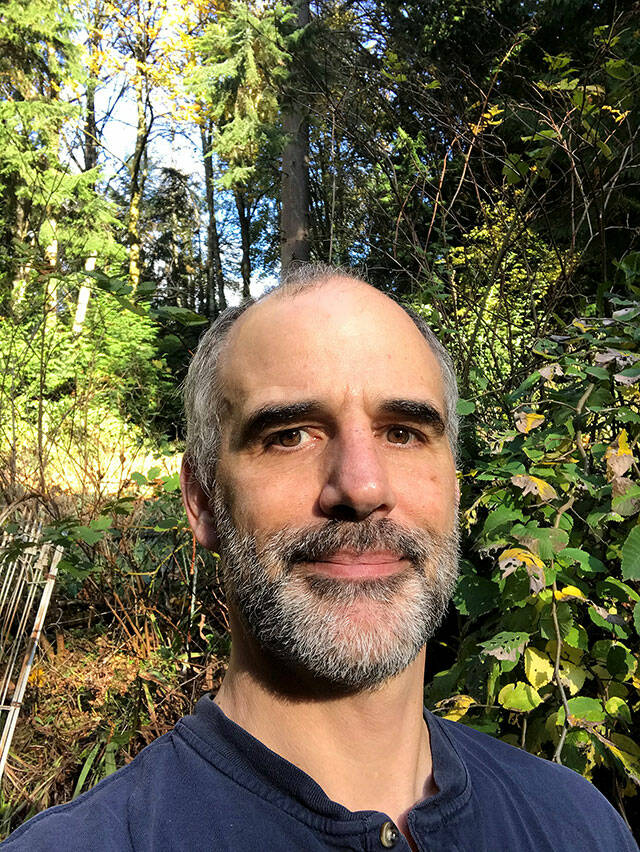According to King County’s Vashon Basin Steward, Greg Rabourn, before we can understand how best to live with wildlife on Vashon-Maury Islands, we need to understand how important our island is to the region’s ecosystems.
“If you look at regional maps (mrlc.gov), indicating impervious surfaces, you’ll see that we are an island of habitat,” said Rabourn.
This means that Vashon has more open spaces, forests, and meadows than most of the surrounding areas, including the Kitsap Peninsula and King County as far east as the Cascade foothills. Those impervious surfaces — where fluids cannot penetrate, i.e., roads, buildings, parking lots — indicate development that’s not necessarily compatible with healthy wildlife.
Vashon’s “habitat” status is a critical asset to Puget Sound’s varied ecosystems, especially when combined with our 50 miles of shoreline, which Rabourn calls a “vital ribbon of habitat.”
Unlike the rest of King County, only 50% of Vashon’s shorelines are bulkheaded. And some islanders are taking down their bulkheads to allow for even more natural shoreline to flourish. When shoreline habitat includes driftwood, low hanging trees and plants, insects that feed salmon thrive and generate a healthier life cycle for all Puget Sound marine life, even endangered Orcas.
Everything we do on our own island properties affect wildlife. We are all stewards of Vashon’s natural areas. Let’s better serve our wild neighbors by caring for the habitat surrounding our own homes. But how?
Protect a freshwater stream by helping the Vashon Nature Center monitor its insects. Rabourn says that following the bugs can get a measure of a stream’s general health.
Protect our wildlife animals. Because cougars and bears are rare here on Vashon, residents relax about protecting pets and farm animals until there’s a problem. Do not allow them access to garbage or pets. Rabourn repeats the Yellowstone Park adage – “A fed bear is a dead bear,” and that applies to cougars, coyotes, and raccoons. When coyotes, for example, become habituated to human territory, it becomes their sanctuary, and they’ll protect it.
One neighbor’s pet could be another neighbor’s chicken thief and that’s the end of the animal. Pay attention to overall wildlife populations: the Vashon Nature Center is currently conducting a study of our wild animals. They’ve installed wildlife cameras (critter-cams) in strategic areas which they monitor, then analyze the data to give us a better idea of larger animal populations on the islands, such as beavers, coyotes, deer, cougars and even bears.
Turn off your outside lights at night. Light pollution, surprisingly, is a hazard for wildlife. It’s not necessary to illuminate the woods. Rabourn recommends turning off outside lights at night to allow bugs to do nighttime pollination or feed the birds and fish rather than die splattered on an outdoor light fixture.
Do not use pesticides and herbicides on your property. These wreak havoc with island and Sound plants and organisms. Washington Dept. of Ecology detected 23 pesticides in Puget Sound waterways, many coming from lawns. These pollutants reduce the diversity of essential soil life and increase algae growth in lakes, reducing oxygen levels and killing fish and other organisms. Let your lawn go to field — it can support a wealth of beneficial insects and birds.
Plant native plants. Rabourn says this is the best way to protect wildlife on Vashon, creating habitat and diversity in our ecosystems. He recommends planting in “layers,” starting with a large tree, then next to that a smaller tree like a vine maple. Then work downward with smaller native plants like currants or shrubs, then salal, sword ferns, or wild strawberries as ground cover. Native plants require less care and are amazing in the wildlife they attract, from birds who live high in the trees to butterflies in ground cover.
Want to do more? Volunteer with organizations that work on behalf of our ecosystems such as The Vashon Nature Center, the Vashon-Maury Island Land Trust, Vashon Audubon and Vashon-Maury Island Groundwater Protection Committee.
There are so many ways to live in harmony with the wild creatures who are our co-habitants. Rabourn recommends the Washington State Department of Fish & Wildlife website, Living with Wildlife (wdfw.wa.gov/species-habitats/living) for more exciting ideas about how to be a good wild neighbor.
This commentary was written by the Green Briefs editorial team, with Greg Rabourn, King County’s Vashon Basin Steward. Green Briefs commentaries are regularly published in The Beachcomber, in partnership with the Whole Vashon Project. Visit the organization’s website at wholevashonproject.org.



